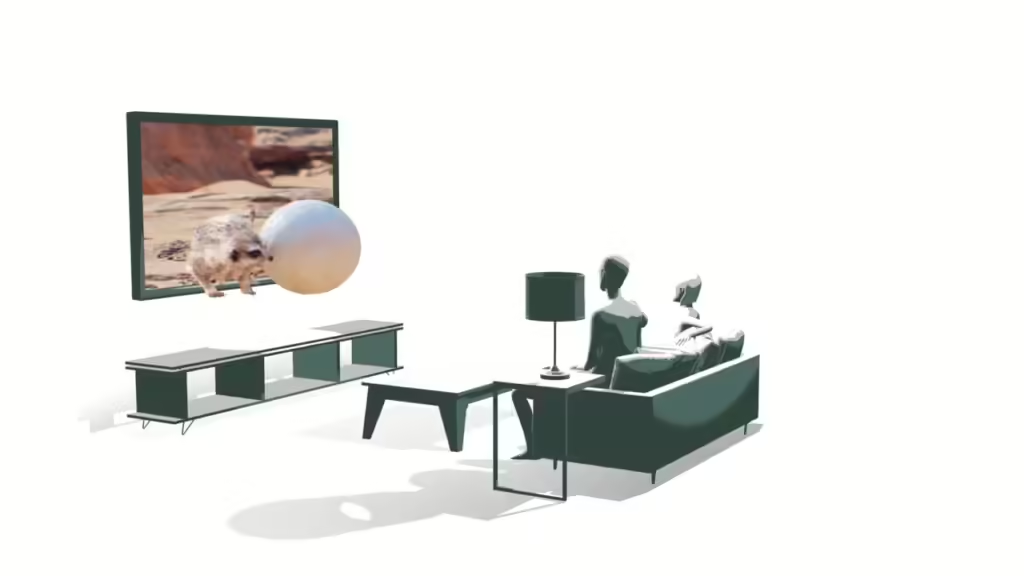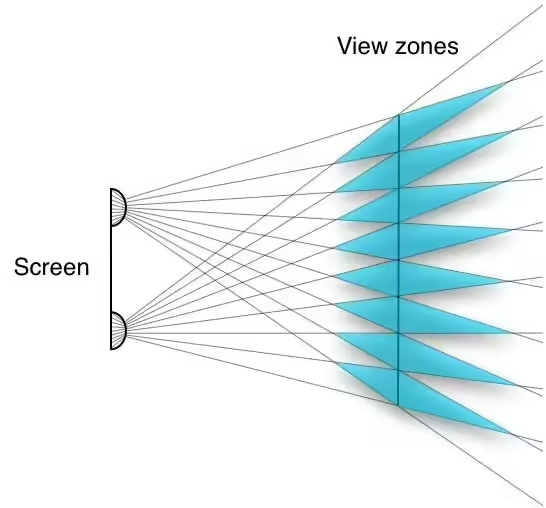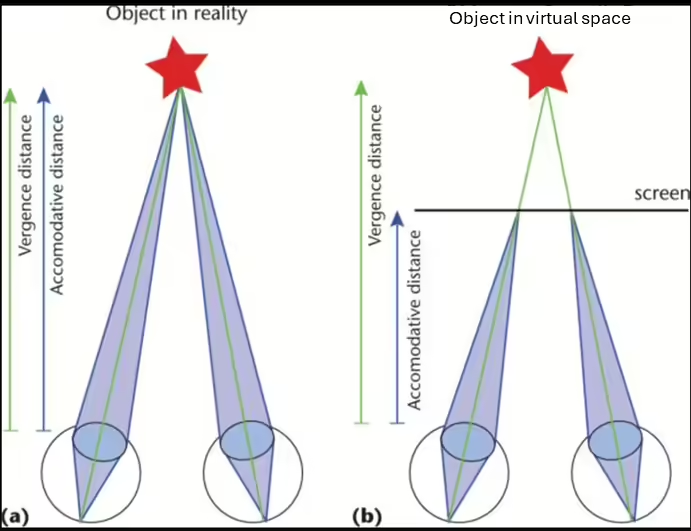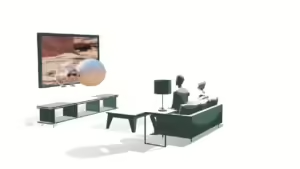A 3D display can offer a truly magical experience. Imagine diving into an underwater world filled with tropical fish or joining an astronaut on a space mission, feeling almost weightless yourself. Giant Screen Cinema has showcased the potential of 3D to awe audiences, but the flip side is that current technical limitations can lead to distractions. Over time, these distractions tend to outweigh the “wow” factor, possibly explaining why 3D cinema has resurfaced in waves, with each new generation eager to experience the magic. However, for 3D to truly stick around and become a staple of home entertainment, we need to address these technical challenges.

This article will discuss the market needs and technical requirements for quality 3D displays, drawing on insights from a recent white paper on Realfiction’s breakthrough 3D display technology designed to tackle these very issues.
Below are key considerations for any developer of 3D displays:
Required Viewing Sweet Spot
Consumers and professionals alike desire 3D displays that deliver natural images without the need for glasses. While some applications are tailored for single viewers, many require the ability to support multiple viewers with high-quality 3D visuals. Glasses-free 3D displays have historically suffered from the issue of a “sweet spot,” where the 3D image works best within a certain range. Stray outside this zone, and the 3D effect falls apart. Eliminating the need for this sweet spot is essential for the future of 3D technology.

Improved Horizontal Parallax
Auto-stereoscopic displays—glasses-free 3D displays—provide a limited number of stereoscopic views horizontally. Super-multi-view displays, a more advanced form of auto-stereoscopic technology, offer overlapping views for a smoother experience with enhanced horizontal parallax. This improvement can greatly enhance applications in areas like TV, gaming, and digital signage, providing better look-around capability and high-fidelity visuals for multiple users.
Vergence and Accommodation Conflict
Minimizing eye strain and nausea is critical for 3D displays. Much of this discomfort is due to the conflict between vergence (how eyes converge when focusing on an object) and accommodation (where eyes focus). Current 3D displays often place virtual objects in front of or behind the screen surface, causing unnatural strain. Addressing this issue is especially important for personal displays with close viewing distances, like those used for 3D movies.

Vergence and Motion-Parallax Conflict
Discomfort can also arise from a conflict between vergence and motion-parallax. In a 3D movie, for example, you may experience depth while sitting still, but if you move your head, the perspective doesn’t change, creating a jarring effect as though the scene is “strapped to your head.” This can cause nausea, making it another key issue for 3D technology to address.
Miniaturization Effect
The “miniaturization effect” is another distraction, where objects and people appear smaller than life, as if part of a puppet theater. This effect is more pronounced on smaller screens. When viewing 2D content, we are accustomed to seeing scaled-down images, but with 3D, our brains expect realistic sizes. Adjustments to stereo parameters can reduce this effect, but delivering individualized 3D images based on viewing distance is a challenge.

Limitation of Discreet Perspective Views
Even with 100 different perspective views, super-multi-view displays can cause noticeable jumps in perspective when the viewer moves their head. This issue can be mitigated by blending perspective views, but that often results in blurred images. Eye-tracking technology combined with real-time rendering offers a possible solution, but it still requires dedicated 3D perspectives for each viewer.
Moire-like Interference
Many autostereoscopic displays use slanted lenticular arrays, which can cause a moire-like interference effect, reducing the clarity of fine details like small text. Some manufacturers have tackled this with electrically controlled arrays that switch off for 2D mode, but the interference in 3D mode remains a limitation for professional use.

Immersiveness from Large Display Sizes
A large display is essential for a truly immersive 3D experience, helping to avoid the sensation of peering through a small window or into an aquarium. Larger displays reduce discomfort by keeping the screen edges out of view and avoiding “frame-violations,” where stereoscopic objects appear cropped by the display frame. Consumers, however, will likely only invest in such displays if they can enjoy them with friends or family, underscoring the need for multi-viewer technology.
Insufficient Frame Rate
A minimum frame rate of 60Hz per eye is required for smooth 3D visuals, meaning the display must refresh at least 120Hz for stereoscopic image pairs. Displays that do not meet this threshold can cause motion artifacts and flicker, further detracting from the 3D experience.
Crosstalk
All stereoscopic displays exhibit some level of crosstalk—when one eye sees a faint ghost of the image intended for the other eye. While “ghost busting” algorithms help reduce this, keeping native crosstalk low is critical to ensuring a quality experience.
Moving Forward with Realfiction’s Hybrid Scan Display
Many current 3D displays marketed as “holographic” aren’t truly holographic. Instead, they’re super-multi-view displays that still suffer from many of the limitations discussed above. True holographic displays with full-color, moving images are still in development, but Realfiction’s Hybrid Scan Display technology offers a significant leap forward. This innovation supports multiple users simultaneously, addresses conflicts between vergence and motion-parallax, and reduces the miniaturization effect. By employing Unity game engine rendering, it also minimizes perspective jumps, and because it doesn’t rely on lenticular technology, there is no loss of resolution when switching between 2D and 3D modes.
With further advances, this technology has the potential to solve the remaining issues and unlock widespread acceptance of 3D displays across both professional and consumer markets.

AChinnock holds a BSEE from the University of Colorado and has previously worked for companies such as General Electric, Honeywell, MIT Lincoln Labs and Barnes Engineering. In 1998 he founded Insight Media, which published newsletters (including Display Daily) and market reports plus custom consulting on the emerging parts of the display industry. Insight Media also produced many display events such Projection Summit, Display Summit, QLED and Advanced Display Summit, Streaming Media for Field of Light Displays (SMFoLD), and more. Chinnock also helped found and lead two display-focused industry organizations: the 3D @ Home Consortium and the 8K Association. He currently provides custom writing and marketing services for clients with advanced display-based technology.

